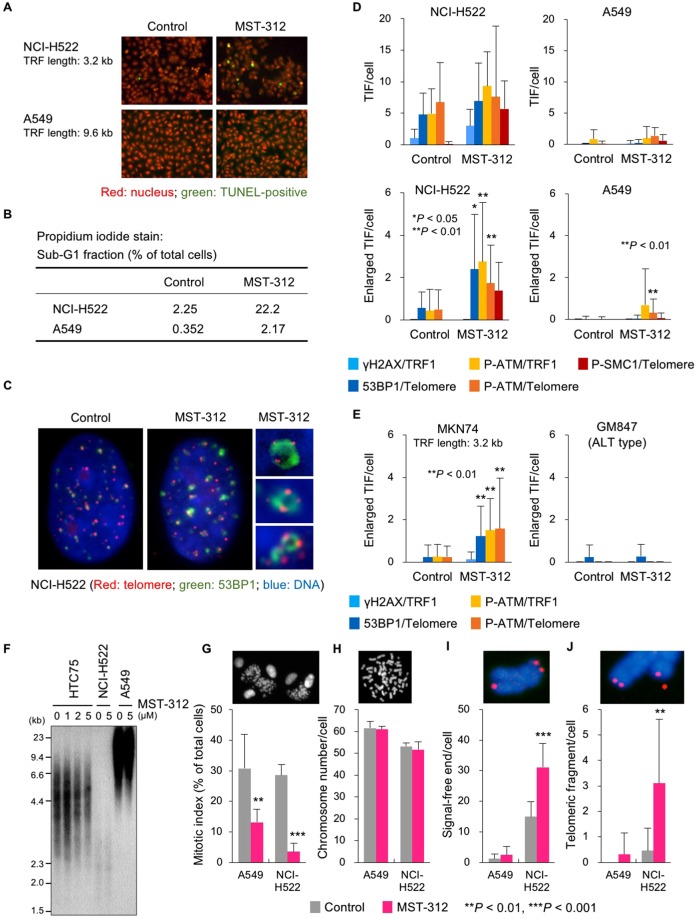Figure 2.
Telomere dysfunction induced by MST-312. (A) TUNEL assay of MST-312-treated cells. Human lung cancer NCI-H522 [mean telomeric restriction fragment (TRF) length = 3.2 kb] and A549 (mean TRF length = 9.6 kb) cells were treated with 5 μM MST-312 for 48 h and then subjected to TUNEL assay for detection of apoptotic cells (green). (B) Quantification of apoptotic cells. Cells were treated as in (A) and then stained with propidium iodide; the apoptotic sub-G1 fraction was quantitated by flow cytometry. (C) Immuno-FISH analysis of NCI-H522 cells treated with 5 μM MST-312 for 48 h. Red: telomere DNA; green: 53BP1; blue: DAPI. Right panels are magnified views of enlarged telomere dysfunction-induced foci (TIF). (D,E) Quantitation of TIF. Cells were treated as in (A), and telomeres and the indicated proteins were detected by FISH and immunofluorescence staining, respectively. Because the cells with short telomeres gave high background levels of TIF even without MST-312 treatment (D, upper left), enlarged TIF were quantitated as a hallmark of the MST-312-induced telomeric DNA damage response. Error bar indicates standard deviation. Asterisk indicates statistical significance in the difference between control and MST-312-treated cells (unpaired two-tailed t test). ALT: alternative lengthening of telomeres. (F) Telomere southern blot analysis. Cells were treated with indicated doses of MST-312 for 48 h. HTC75 fibrosarcoma cells were analysed as a control because the telomere length fluctuation of this cell line can be detected by southern blot analysis. (G) Cells were treated as in (A) and mitotic index was quantitated. (H–J) Cells in (G) were further incubated with colcemid. Metaphase spreads of chromosomes were subjected to telomere FISH, and chromosome number (H), telomeric signal-free ends (I) and telomeric fragments (J) were quantitated. Red: telomere DNA, blue: DAPI stain of chromosome DNA. Asterisk indicates statistical significance (vs. control, unpaired two-tailed t test).

